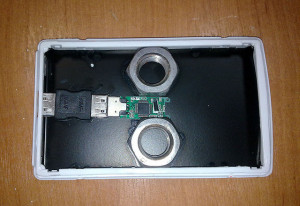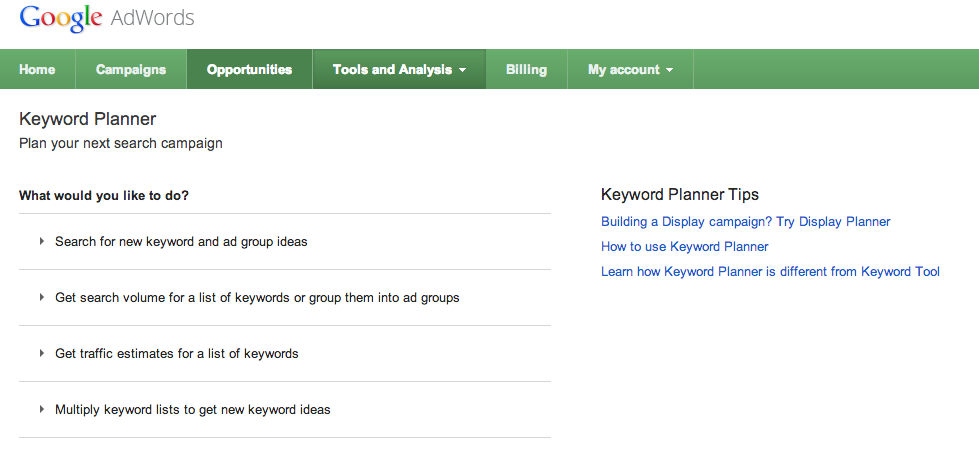I have an earth shattering revelation to make: you MUST have items to sell before you can start an ecommerce business! Having a beautiful website is all well and good, but if you haven’t got inventory, you just don’t have a business.
Unfortunately, the process of product procurement can seem too big of a hurdle for lots of would-be ecommerce business owners, and I think that’s a shame. In this article I’m going to break down the initial procurement process into six simple steps – making it as easy as possible for anyone looking to break into the world of ecommerce.
Note: You may want to print this article out and refer to it as you go, there is a lot to take in.
1) Finding a supplier
Finding a supplier or distributor can be hard – they tend to keep a fairly low profile. When I started out, I used to use Google to find suppliers – I’d usually go with search phrases like “<brand name> wholesale” or “<product name> buy in bulk”. The problem was, I invariably ended up on a Far Eastern product sourcing site, where I couldn’t always be sure of the authenticity of the seller, or the items I was trying to purchase.

In the end, I made an amazing discovery. Most items you purchase from stores or from domestic ecommerce companies are subject to labelling requirements by law. These requirements tend to vary from country to country – the most stringent labeling requirements tend to be in Europe.
Buy a sample of the item(s) you plan to stock in your ecommerce website from a well known shop, or from a well known website (Amazon is always a good call). When that product arrives, look carefully at the labeling on it. If you’re lucky, you’ll find the name of the supplier or distributor, if not, you should be able to find the name of the supplier’s website, or even their mailing address.
Armed with that information, you can do a quick Google search for that supplier’s contact information and you can call or email them directly. This is the method I’ve used to contact around 20 brands, it works every time. Previously, I would spend months on end trying to locate official suppliers and distributors for products, but more often than not, the answer was staring me right in the face! Look at the products in your home, most of them will have an address, website or some other supplier information printed somewhere on the packaging. Although this information is there for legal reasons, it’s handy for getting in touch with a brand, too!
If the above doesn’t work, you can always try LinkedIn. A couple of years ago I wanted to stock a fairly big brand, but the brand’s website didn’t work, and I received no response to letters I mailed to their address. In the end, I searched for the brand name on Google, and suffixed it with “LinkedIn”. I managed to find the managing director’s profile, so I sent him a quick message through the LinkedIn platform. Within a week, I had placed my first order with this brand. I’m not saying you should approach every supplier or distributor by LinkedIn, it should be treated as a last resort. It is very effective though!
A lot of suppliers out there are very picky with the companies they supply. The bigger the brand, the pickier they can afford to be. Most suppliers will want to see trading history, and evidence that you actually own a website. This presents itself as a chicken and egg type scenario – without a website some suppliers won’t supply you with their products, but without products to sell, you don’t want to pay someone to develop a website.
2) Doing due diligence
Due diligence involves looking into the supplier you want to work with in detail – you should also look carefully at the products they’re going to sell you. It’s an important part of the procurement process – if you fail to carry out due diligence correctly you could end up on the wrong end of an expensive scam, or you could end up buying a lot of stock that can’t be sold because it’s faulty or counterfeit.
Where possible, due diligence is best done in person by meeting your supplier. Sometimes this isn’t possible, especially if you’re purchasing stock from overseas, so be sure to do as much research as possible. Here are a couple of checklists for you to work from, one for the supplier themselves, and one for the products they’re selling:
Supplier
- Are they trustworthy? Can you talk to any of their existing clients to verify this?
- Are they a registered business or legal entity in their country?
- Are they open about their contact information and address? Does the contact information work? Does the address actually exist?
- Are payment terms flexible? Do they accept a range of payment methods (like credit card) so that you’re covered as the buyer?
- Did you contact them, or did they contact you? Most scams start when a supplier contacts a potential client.
Products
- Have you received a sample? Have you received assurances all products will be manufactured to the same standard as the samples?
- Do the products comply with all legal legislation in place? (This includes things like labelling requirements, the chemical composition of products, and more.)
- If branded, are the products 100% genuine? If they’re not and you’re caught selling them, it’s you that will be in trouble.
Due diligence can seem like a lot of needless bureaucracy, but it has to be done. It protects you from being scammed by sellers; it also protects you from buying stock that you can’t sell on because it’s of poor quality, or because it’s counterfeit. After running through the due diligence process a couple of times, it’ll become second nature to you when dealing with new suppliers.
3) Getting a discount
Discounts make the retail world go round. OK that didn’t make sense, but I LOVE discounts! Every supplier out there can offer you some kind of discount, whether it’s 5% off their standard prices, or free inbound freight. Some suppliers will tell you their hands are tied and that they can’t grant you a discount, but they’re not being honest. If a supplier says they can’t do anything, ask to speak to someone a little more senior like a director – someone that can approve a discount for you.
Discounts work in different ways with different suppliers. Typically, suppliers have a list of wholesale prices – these prices are designed to offer sellers a decent margin when sold at the full RRP. Suppliers then offer each client (aka, you) a percentage off those trade prices – that’s your discount. The problem with standard wholesale pricing is that most ecommerce companies don’t sell things at the full RRP – and they have to throw things in like free shipping. What looks like a healthy margin will soon diminish, so you have to stand your ground and fight for better margins by ramping up the discounts you have in place with suppliers.
The first major supplier I worked with threw a discount at me before I’d even had a chance to ask for one. They said “we’ll give you 15% off our standard wholesale prices because you’re a startup business”. After that point I realized that discounts are out there for the taking, so wear your best poker face.
I can’t share all of my negotiating tactics, but when signing up with a new supplier, I always go in hard – I ask for 50% off their standard wholesale prices. Sometimes this comes off right away and the supplier says “sure” – sometimes I have to wear my very best poker face and cross my fingers. In recent times, the lowest discount I’ve settled for is 40% – so I’ve not done too badly.
Discounts are really important when you’re selling products online – as any established seller knows, points are hard to come by and fees come at you from all different angles, so if you can save a few dollars per unit on every single product you sell, your margins will look a whole lot healthier. When you’re up against companies like Amazon, securing the biggest possible discounts has to be done. If I settled for standard wholesale pricing with my suppliers, my company would be running at a loss. The bigger the discounts you secure with suppliers, the bigger your profit margins will be. It’s very simple.
4) Gauging demand & placing your first order
It’s always difficult to know how much stock to purchase when you place your first order. Gauging demand can be very hard – even more so if your business is just starting out and it’s the first batch of stock you’ve ever purchased. Here are a few tricks I use to determine how much to order:
eBay: On eBay you can click on the number of items that have sold on a specific listing, and you can see the different variants that have been purchased. You usually have access to a couple of hundred previous sales – so you can see what variant has been the most popular over previous days and weeks. This can be useful when ordering in stock – you can ensure that you order more of the popular lines, and less of the unpopular lines. Find a some popular eBay listings in your niche and look at what has sold well – it’s not a rock solid basis to work from, but it gives you a general idea of what’s in demand and what’s not.
Google Keyword Planner: The Google Keyword Planner tells you how many searches people are executing for terms related to your products. Look at specific keyword searches – not broad keywords. If you’re looking to stock a range of printers, don’t look at keywords like “office printers” – they’re too broad. Look at the number of searches surrounding the exact model number of the printer – this gives you a much clearer indication of the demand for that specific item. If there’s no data in the keyword planner for that item, the chances are that it isn’t being searched for a whole lot on Google (that doesn’t mean you shouldn’t stock the item, though).

Competitors: One of the suppliers I work with has over 250 different lines items in their inventory. As a startup business I simply couldn’t afford to stock all 250 lines in one go – so I looked at some of the bigger websites in my niche, and observed the lines they stocked. I concluded that they stocked these lines for a reason: because they’re popular. When making my first order I stuck to those lines – as time went by and my business fared better, I gradually stocked all 250 lines. Making the initial order was difficult – but thanks to a bit of competitor research it wasn’t a hard to decision when it came to determining the first few items to stock.
Where possible, I try to order in the same number of each item I’m purchasing from a supplier. Let’s say I order 10 different types of t-shirt from a suppler. I’d order 24 of each style, on my initial order. Within a few days, I’d have a clear winner – a style that’s most popular with our customers. The second I start selling the t-shirts I’m getting real sales data, I can then use this sales data when placing future orders.
The more sales data you have, the more accurate your orders will be. I might know, for example, that blue t-shirts sell great in summer – but over the Christmas period, red t-shirts sell better. It’s impossible for you to know this before placing your first order, so be careful – don’t overstretch yourself (if the items don’t sell at all, you’ll have cash tied up in them) and order a modest number of each products from your supplier. Once you know what sells and what doesn’t, you can start placing more precise orders with your supplier, knowing what your customers are likely to purchase.
5) Getting permission to use trademarks & logos
For various reasons, a lot of ecommerce business owners completely skip this step of the procurement process. Marketing your ecommerce website is kind of important! If you don’t market it, no one will know it exists – consequently, you’ll make no sales.
A popular way to market is by using banner ads via platforms like Google AdWords and Facebook Ads. If you’re going down this route, seek permission from the supplier or brands you’re working with to use their name and/or logos on your banners. Some brands have guidelines and rules in place to prevent customers from using their trademarked names and logos in their marketing materials. You should always seek permission. Don’t just assume the brand or supplier will be OK with you using their name or logo – ask!
This simple logic applies for all other forms of marketing too – whether you’re planning a television commercial, flyers to hand out in the local shopping mall, or even some fancy artwork for your website’s homepage.
Asking the question doesn’t hurt, and it can save you a lot of legal trouble. Get confirmation you can use a brand’s name and logo in your marketing materials – put the written confirmation somewhere safe. If it’s an email, print it out and file it away. If anyone ever comes back to you and says: “Hey, you’re using our trademark without permission!” – you can throw your written confirmation right back at them.
I know people who have used logos and trademarked terms in their online marketing materials without seeking permission. They then received a strongly worded email or letter – and their defence was “Well, I kind of just assumed I could use your logo.” Don’t be one of those people, seeking permission doesn’t take long – and it’s the courteous (and smart) thing to do.
6) Listing your stock for sale
Once you’ve gone through the process of finding a supplier, conducting due diligence and placing your first order, you can proceed to the final step – listing your stock for sale! Initially, this will seem really exciting, but once you’ve created a few product pages or listings, the novelty soon starts to wear off. Adding product descriptions and images can become a bore very quickly.
Lots of people tend to do a slap-dash job of listing their stock for sale, whether it’s on Amazon, eBay or their own website. I completely understand why – it’s fairly monotonous. That said, when a user clicks on your listing or your website, that’s your one opportunity to sell your product to them. Make sure you write compelling product copy that grabs their attention. Use high-resolution images that look professional. Make the whole experience pleasant and comprehensive – don’t leave that user looking for more information, or turned off by lots of spelling mistakes.
It’s much better to list 100 items over the span of 10 days than 1,000 items in one day. Give each and every product in your inventory the attention to detail it requires when listing. Great product description copy, coupled with high-resolution images is a recipe for success, no matter what platform you’re selling on.
The process of procuring products to sell can take significant time and effort, but at the end of the day, it’s the single most important part of a retail business. Get ready to think outside of the box when it comes to finding suppliers, be objective when doing due diligence, and wear your best poker face when negotiating a discount. If you follow my guide to product procurement, there’s no reason why you can’t make it in the world of ecommerce.




12 thoughts on “The Essential Guide To Product Procurement”
Awesome guide, Nick! Steps 2 and 4 can be fatal pitfalls for a fledgling business if done poorly. However, in my view step 3 is the one you really want to get right.
Awesome guide, Nick! Steps 2 and 4 can be fatal pitfalls for a fledgling business if done poorly. However, in my view step 3 is the one you really want to get right.
Awesome guide, Nick! Steps 2 and 4 can be fatal pitfalls for a fledgling business if done poorly. However, in my view step 3 is the one you really want to get right.
Very good guide write up! Thanks for sharing!
Very good guide write up! Thanks for sharing!
Very good guide write up! Thanks for sharing!
Excellent–thanks
Excellent–thanks
Excellent–thanks
Pingback: Pros and Cons of Fulfillment By Amazon - Sellbrite
Pingback: Pros and Cons of Fulfillment By Amazon - Sellbrite
Pingback: Pros and Cons of Fulfillment By Amazon - Sellbrite